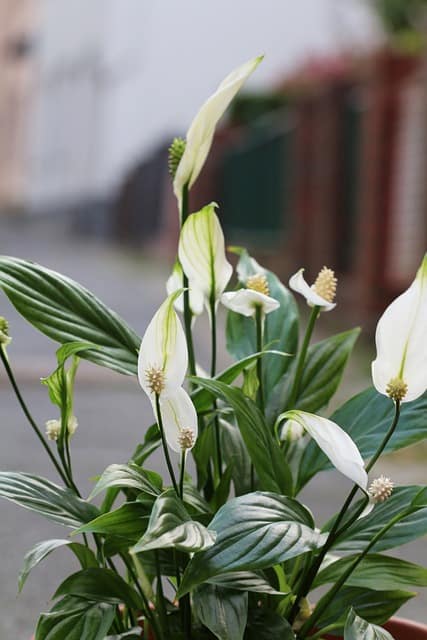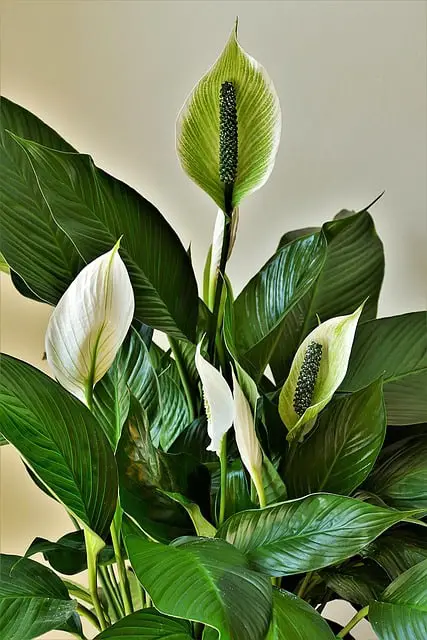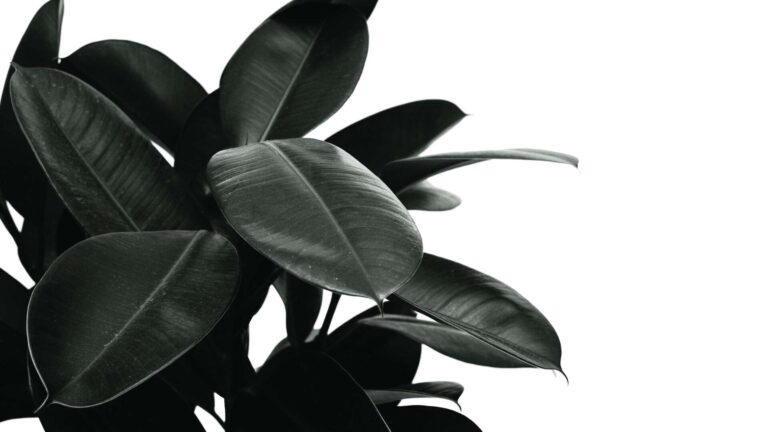Best Potting Soil for Peace Lily: Tips for Success
Peace Lilies, known as Spathiphyllum. They fascinated indoor gardeners with their beautiful white blossoms. But, they are not genuine lilies and belong to the aroid family. Originating from tropical South America, they are renowned for representing peace and purity.
Peace Lilies have become a favorite choice for indoor plants because they can thrive in low-light environments and are known for their ability to purify the air.
For optimal growth, choose the Best Potting Soil for Peace Lily plants. It provides essential nutrients to maintain proper moisture levels.
Choosing the appropriate potting mix can significantly impact your gardening success. It’s ensuring your Peace Lilies grow healthy and vibrant. Let’s explore the secrets to nurturing stunning Peace Lilies with a potting mix.
Understanding Peace Lily Soil Requirements

Peace lilies have specific soil requirements. That’s important for their growth and well-being. These houseplants thrive in well-draining soil with a good balance of nutrients.
Choose a potting mix that contains peat moss or coconut coir. These organic materials help keep moisture without making the soil too soggy. Avoid using garden soil for your peace lily to prevent potential harm from pests and diseases.
To ensure adequate drainage and moisture in the soil, incorporate perlite, vermiculite, or sand into the potting mix. These materials improve soil aeration and prevent excessive moisture retention.
Additionally, choose soil that is pH-balanced. This allows the plant to absorb nutrients effectively and maintain its health. So when selecting the best potting soil for peace lilies. Best prioritize good drainage and an appropriate balance of nutrients.
Read More:- Monstera Albo Vs Thai Constellation: Which One To Grow?
The Role of Soil pH in Peace Lily Growth
Maintaining the appropriate soil pH is essential to promote peace lilies’ growth. These houseplants prefer slightly acidic soil, with a pH ranging from 5.5 to 7.
The pH level has an impact on the ability of the plant’s roots to access nutrients. Which, in turn, impacts its overall growth and health.
Add a small amount of compost into the soil to maintain the ideal pH levels and decrease acidity. Organic matter helps regulate pH and improves nutrient availability, promoting healthy growth.
It is also important to test the pH of the soil and make adjustments as necessary. Choose the suitable potting soil that aligns with the preferred pH range. It is key to creating a conducive environment for peace lily growth. By finding the perfect balance, you provide peace lilies with the ideal growing conditions they need to thrive.
DIY Best Potting Soil for Peace Lily
Here are a few of the best potting soil for peace lily mixes I often use.
Basic Mix:
This mix provides a balanced foundation for general Peace Lily care, ensuring optimal growth conditions.
- Orchid Bark: 25% Orchid bark provides excellent drainage and aeration for the roots of your peace lily.
- Peat Moss: 20%. It holds moisture while allowing any extra water to be drained.
- Perlite: 25% a lightweight volcanic rock improves drainage and prevents soil compaction.
- Worm Castings: 15 % Adds nutrient-rich organic matter that supports plant growth.
- Activated Charcoal: 15 % A natural anti-microbial, charcoal absorbs toxins and harmful substances.
Well-Draining Blend:
This mix is designed to mimic the natural rainforest habitat of Peace Lilies. Ensuring they have the right balance of water and aeration.
- Coco coir (50%): Potting soil is the main component of this blend, providing nutrients and structure.
- Orchid Bark or Pine Bark (30%): These components provide excellent drainage and aeration. They prevent waterlogging, which can harm Peace Lilies, especially in humid conditions.
- Perlite (20%): Perlite maintains its role in promoting drainage and aeration.
Also Read :- Does Pothos Like Humidity? The Ultimate Guide
Light and Airy Mix:
This mix is well-suited for environments with higher humidity and rich in topsoil. We are providing the necessary conditions for vibrant Peace Lily growth.
- Peat Moss (40%): This mix has more peat moss, which improves moisture retention. It’s ideal for humid environments.
- Perlite (30%): Perlite ensures proper drainage and aeration. Even as the mix becomes more moisture-retentive.
- Vermiculite (20%): Vermiculite improves soil structure and helps control moisture by balancing water retention and aeration.
- Orchid Bark or Pine Bark (10%): This minor addition of bark further enhances drainage. It also prevents the mix from becoming overly compacted.
These soil mix variations cater to different preferences and environmental conditions. Select the option that best matches your Peace Lily’s needs and your home’s conditions.
Remember to modify your watering schedule according to the specific blend you have. Each combination affects how water is retained and drained from the soil. Using a chopstick to poke holes in the soil can also help with drainage and aeration.
What is the best ready-made potting soil for Peace Lily?

When it comes to finding the best ready-made potting soil for your peace lily. I don’t find any specific soil mix designed only for peace lilies. However, certain blends have affected their growth and health.
One option worth considering is the Monstera Potting Soil. This mix is renowned for providing the ideal moisture retention and drainage balance. Which is crucial for peace lilies.
The Monstera Potting Soil encourages the growth of strong roots and supports optimal plant development with its combination of organic matter and nutrient-rich components. It includes orchid or pine bark, enhancing drainage and pumice for added aeration.
Miracle-Gro Indoor Potting Mix works, too. This ready-made soil mix has promoted lush foliage and vibrant blooms in various houseplants. This mix retains water and provides enough aeration, making it great for peace lily roots.
The best ready-made potting soil for your peace lily will depend on your specific preferences and plant needs. Selecting soil mix. Moisture retention, drainage, and nutritional content are crucial. Your peace lily will thrive and stay healthy with the right soil.
When to Repot Your Peace Lily?
Professional gardeners recommend repotting your peace lily every one to two years. Recognizing the signs indicating it is time to repot your plant is essential. These signs include the roots extending beyond the drainage holes or when the plant becomes too big for its current pot.
It is advisable to carry out the repotting process in the spring or summer months when the plant is in its active growth phase.
Read More:- Best Soil For Chinese Money Plant – What Kind Do You Need?
Identifying Root-bound and Overfertilized Peace Lilies
When a peace lily becomes root-bound, its roots tend to fill up the entire pot, leaving no room for growth. Signs of a root-bound peace lily include:
- Visible roots were circling the inner edges of the pot.
- Slow growth or stunted appearance.
- Frequent wilting despite regular watering.
- Soil dries out quickly after watering.
- Difficulty in absorbing water and nutrients.
In order to tackle these problems, here are a few suggested actions:
- Repot the peace lily into a larger pot to provide more space for root growth.
Overfertilized Peace Lilies:
Overfertilizing peace lilies can have detrimental effects on their health. Signs of overfertilization include:
- Burnt or brown leaf tips and edges.
- Yellowing or wilting leaves.
- Weak or stunted growth.
- Excessive foliage with few or no flowers.
- The build-up of salt deposits on the soil surface.
To tackle these problems, here are a few suggested measures:
- Flush the soil with water to help leach out excess salts.
- Refuse fertilizer for some time to facilitate the plant’s recovery.
- When resuming fertilization, use a diluted, balanced fertilizer, following the manufacturer’s instructions.
- Track the plant’s response and adjust fertilization.
Remember, regular care and maintenance are crucial for the health and well-being of peace lilies. Observation and appropriate interventions can help revive and maintain their vibrant appearance.

How to Repot a Peace Lily Correctly?
Here’s a step-by-step guide to help you with the process:
- Choose the right pot: Choose a size larger than the current one and ensure it has holes to avoid waterlogging.
- Prepare the new pot: Fill the new pot with the discussed high-quality potting soil.
- Remove the peace lily from its current pot: Gently turn the plant upside down and tap the pot to ease the plant out.
- Inspect and trim the roots: Check for signs of rot or damage. Use pruning shears to remove dead or unhealthy roots.
- Put in the new pot: Position the plant in the center
- Fill the pot with soil: Fill the space around the plant with fresh potting soil, pressing it down to eliminate air pockets.
- Water the plant: After repotting, water properly. Avoid overwatering.
- Maintain regular care: Regularly care for your peace lily, including appropriate watering, fertilizing, and cleaning leaves.
Can Peace Lilies Survive in Succulent Potting Mix?
Peace lilies can tolerate a variety of potting mixes. However, using a succulent potting mix or cactus soil may not be the best choice. Succulent potting mixes are designed for plants that need well-draining soil. Such as succulents and cactus soil. But peace lily prefers a more moisture-retentive mix.
How Can You Tell if Your Peace Lily Needs Different Soil?
If you notice certain indications, it may be a sign that your peace lily requires a change in its soil.
- Yellowing leaves: Yellow leaves may indicate overwatering or poor drainage. The soil might need to be allowed proper water.
- Root rot: A foul smell or black and mushy roots in your peace lily may indicate root rot. This happens when the roots are wet due to inadequate drainage in the soil mix.
- Stunted growth: If your plant is struggling to grow. It may be due to the soil needing to meet its nutrient and moisture needs.
Consider changing the potting soil for your peace lily if you observe any of these signs. Choosing a well-draining mix that retains much moisture.
Also Read : – Unlocking Success: How To Get Hoya To Bloom
Conclusion
In summary, finding the best potting soil for Peace Lily is crucial to its health. The plant’s roots depend on the right environment for successful growth. A mixture of well-draining potting soil, peat moss, and perlite provides a nurturing space for the root ball, allowing for proper airflow and preventing excessive moisture that could attract harmful pathogens.
Remember to position the root ball about an inch below the soil surface during planting to strike the perfect balance. Loam-based blends enriched with phosphorus and potassium deliver essential nutrients. As we safeguard our gardens, selecting the finest soil is a protective shield, warding off potential insects and ensuring the plant’s well-being.


